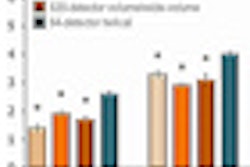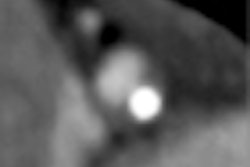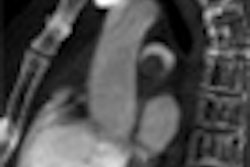About a third of CT exams performed after inconclusive abdominal ultrasound are positive, making CT a good choice for follow-up in many patients, researchers said on Monday at the American Roentgen Ray Society (ARRS) meeting in Vancouver.
The study found that follow-up CT was most useful in diagnosing renal lesions, with a positivity rate nearing 90%. CT had the least value as a follow-up exam for indeterminate pancreatic and intestinal masses on ultrasound, with a less than 10% positivity rate, said author Dr. Supriya Gupta, from Massachusetts General Hospital, in a statement accompanying release of the study.
Opinions vary as to the need for and relevance of further diagnostic imaging workup after an inconclusive abdominal ultrasound exam, according to Gupta and colleagues. The study was performed to evaluate the diagnostic yield from CT studies recommended after nondiagnostic ultrasound exams.
The retrospective review identified 600 consecutive abdominal ultrasound scans performed in 2008 for which abdominal CT was recommended for tissue characterization. The study team grouped the CT findings into four categories and reported the percentages of each type of finding:
- Positive CT findings related to the ultrasound (32.9%)
- Positive findings not related to ultrasound findings (12%)
- Findings that were not significant (42.7%)
- Findings where CT was equivocal or indeterminate (11.7%)
For each category, the researchers noted the nature and type of finding for which CT was performed, estimating diagnostic yield based on the CT findings.
The positivity rate for CT was highest for renal cysts (87.5%), renal stones (81.81%), left adnexal mass (75%), and liver lesions (66.67%), and it was lowest for epigastric mass, pancreatic mass, and intestinal mass (0%-6%), the authors wrote.
Although only about a third of the CT examinations had positive findings, it doesn't mean that the other CT exams were not valuable, as sometimes even negative exams are helpful for patient management, Gupta said.
The results emphasize that the benefits of CT as a follow-up study to inconclusive ultrasound exams need to be more carefully reviewed. Standardized guidelines for follow-up CT need to be developed, possibly in a consensus panel, because CT use has cost and radiation implications, the authors concluded.



















